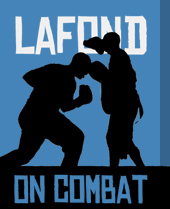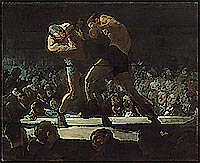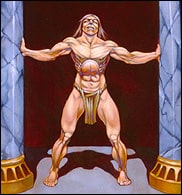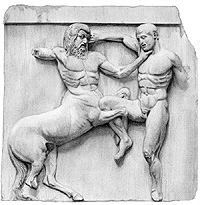Modern self-defense and MMA practitioners have mined the arsenal of the boxer for much of their striking needs. However, boxing in the Western World goes far deeper than the last 118 years of gloved boxing. In this article we will discuss the combat applications of the fist in the western world from 1700 B.C. to 450 A.D. That is over 2,000 years of boxing history from areas as diverse as Iraq, Iran, Egypt, Crete, Cyprus, Greece, and Italy.
Origins
From 1700 to 688 B.C. ancient boxing emerges as an art practiced by those societies that practiced chariot warfare, and later, in Greece and Rome, where chariot racing was the most popular civic activity. For a variety of complex military and religious reasons boxing had a singular appeal to warrior societies that had evolved around the concept of mobile chariot warfare.
Evidence
The evidence for boxing in the ancient world begins with physical depictions in sculptures, carvings and paintings, predominantly on pottery. The balance of the evidence is to be found in the surviving Greek and Latin literature, on topics as diverse as health, philosophy, history, politics, law, religion, and fiction in the form of epic poetry.
Near Eastern Boxing: 1700 to 1000 B.C.
This encompassed the Babylonian and Uraturian traditions. The little surviving evidence for these forms of boxing point to a religious context and the presence of musicians playing a sacred drum. The only technical deductions that can be made is that the fighters employed wrist braces, fought clothed, utilized vertical fist techniques, and did not employ the open hand.
Cretan Boxing: 1700 to 1380 B.C.
Cretan boxing was a complex of layered traditions that appeared to have left no technical legacy for the Greek civilization that succeeded Crete's catastrophic demise. Since Cretan boxing is a very detailed and interesting subject, but does not appear to have contributed to the evolution of Greco-Roman boxing, its examination is best left for a separate discussion.
Egyptian Boxing: 1350 to 1151 B. C.
Egyptian boxing was a unique African art form that may have been influenced by the Cretan tradition, but was definitely intricately related to stick-fighting. This subject deserves to be treated separately for the same reasons cited for Cretan boxing.
Hand-strap Boxing
To understand Greek boxing one must understand the nature of the hand-strap. The strap was of bull-hide, and was associated with the religious aspects of the contests, which included the sacrifice of at least one bull. The strap itself was thin, about a half inch wide, and ten to twelve feet long, with a loop on the end. The loop was used to form a noose that was slipped over the palm, where the wrapping process began, and ended. These wraps unraveled easily, and became stiff and abrasive in places because of the accumulated sweat and blood of many uses. Veteran fighters would utilize the stiff edges of their wraps to slice open an opponent.
Fighters often wrapped their own hands. In time though, a class of expert trainers developed who took care of hand-wrapping. Eventually, this resulted in a complex leather gauntlet which evolved out of wrapping two sets of straps over a fingerless, sleeved wool glove. To appreciate how much of a pain the leather hand-strap was to maintain, ask some older boxers about the days of tied-off cotton wraps, and how easily they unraveled. Then imagine fighting without the glove to keep it together, and multiply the difficulty by three.
Keep these facts in mind, particularly when considering the earlier, archaic boxers. They were still working out the best use of the strap.
Rules and Conditions
There were no weight classes among men (only boys and youths). Bouts were conducted as part of a randomly drawn single-elimination tournament. The bout was fought naked on a raked patch of a race course. There were no rounds, no ropes and no decisions. A fighter fought until he was KO'd or submitted. The bout was refereed by a priest. He punished fouls by beating the offender with a stick until he stopped committing the fouls. There were four fouls: holding; kicking; biting, gouging. The entire body was a target, and a downed opponent would be beaten until he submitted. Spearing the eyes was permitted.
Archaic Greek Boxing: 1220 to 526 B.C.
Note: 1220 to 751 B.C. was a period for which the only evidence for boxing was vague athletic records, and oral traditions: such as The Story of Troy, the Odyssey, and the myth of Jason, whose fellow Argonaut, Polydeukes (Very-sweet), was the original "Sugar", the last half of his name being retained as a term for punching into the 20th Century, with the use of the term "dukes" for fists. The first concrete proof of actual Greek boxing comes via a geometric vase painting dated to 750 B.C.
The nature of boxing during this phase was experimental. There was some bare-knuckle boxing. There are examples of fighters experimenting with various uses of the leather hand-strap. Some wrapped only the wrist. Some wrapped only one hand, and used open hand techniques with the other. Most appear to have wrapped both wrists and knuckles, with the ends of the strap being held in the fist. This method encouraged slow, tight-fisted techniques. Overall there is the impression of rival schools of boxing, with the dominant fighters coming from island communities and overseas colonies. In certain outlying areas fighters actual boxed with (probably wooden) dumbbells held in their hands.
Statistical breakdown of the bio-mechanics of depicted techniques from 750 to 526 B.C.
| Striking Surface | Amplification of Strikes | Defenses |
|---|---|---|
| Fist: 62% | None (arm punches): 46% | None (taking it): 27% |
| Dumbbell: 20% | Linear (pushing off): 40% | Evasion (slipping, fading): 13% |
| Palm: 10% | Rotational (hook): 4% | Active hand (trapping, stopping): 31% |
| Finger: 8% | Angular (uppercut): 6% Gravitational (hammer): 4% | Passive hand (guarding): 29% |
Classical Greek Boxing: 524 to 325 B.C.
By this date a uniform method for hand-wrapping and a new defensive doctrine called "high-handedness" dominated training and competition, and these new tactics permitted a number of boxers to compete successfully as pankratiasts or "all-power-fighters". The boxers of this period were shifting their leads less, fighting at longer range, hitting harder, using a lot more uppercuts and hammer fists, and defending more actively.
Statistical breakdown of the bio-mechanics of depicted techniques from 520 to 336 B.C.
| Striking Surface | Amplification of Strikes | Defenses |
|---|---|---|
| Fist: 77% | None (arm punches): 7% | None (taking it): 28% |
| Dumbbell: 7% | Linear (pushing off): 62% | Evasion (slipping, fading): 21% |
| Palm: 13% | Rotational (hooks): 4% | Active hand (trapping, stopping): 33% |
| Digit: 3% | Angular (uppercuts): 15% Gravitational (hammer): 12% | Passive hand (guarding): 18% |
Greco-Roman Boxing: 320 B.C. to 450 A.D.
Boxing with various types of gauntlets was the norm during this period. Over this span of time the boxer, as an athlete, was eclipsed by the pankratiast, and as a celebrity, by the gladiator. Depictions of boxing declined in most media, with the exception of epic poetry and sculpture. There is literally more information about the hand-gear and personalities of the fighters than about their techniques.
The preliminary investigation into the bio-mechanics and psychology of gauntlet boxing indicates that
- punching increased at the expense of open hand use
- arm punching and linear strikes increased at the expense of rotational and angular blows
- the use of evasion and passive hand defense increased
No longer would men just "take" punches. They were now being hit with a weapon, and would act accordingly.
Conclusion
The ancient Greeks developed a wide variety of effective boxing techniques, and worked out their use in an MMA and military context. These combat athletes were among the best in history, and should be recognized for their accomplishments.











Thank you very much. Thanks to this I now know how ancient boxers actually fought, showing it wasn't just Wing-Chun like some depict it and show that modern boxing derives from ancient (mostly Greek) boxing after all.
You are welcome Sir.
It has been a pleasure.